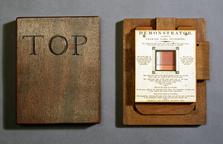

Abdank-Abakanowicz integraph made by G. Coradi
- Made:
- Zurich
Abdank-Abakanowicz integraph made by G. Coradi, Zurich, with extension tracer arm, two ink pens and one lead holder, in wooden box 16 1/2" x 22" x 7"
This type of instrument was used to find the area under a given curve and mechanically solve differential equations. It was invented by engineer Bruno Abdank Abakanowicz in 1878 and in its original version, the integral curve was plotted on a rotating cylinder on the machine’s moving part. As described on the Minutes of Proceedings of the Institution of Civil Engineers in 1885, Abakanowicz improved the instrument in collaboration with M.D Napoli to plot the integral curve on the same plane as the given curve (the area between the curve and a given straight line). A very similar integraph was designed independently by British C.V Boys in 1881.
This example made by the famous Swiss instrument maker Coradi is based on the Abakanowicz-Napoli improved prototype which was widely adopted and produced commercially in the early 20th century. However, mechanical integraphs of the Abdank-Abakanowicz type could solve only relatively simple equations. The need to handle sets of more complex non-linear differential equations led Vannevar Bush to develop the Differential Analyzer at MIT in the early 1930s. In turn, the limitations in speed, capacity and accuracy of the Bush Differential Analyzer led to the development of the ENIAC, the first large-scale general-purpose electronic digital computer during the Second World War.
Details
- Category:
- Mathematics
- Object Number:
- 1967-67
- type:
- integraph
- credit:
- University College, London



